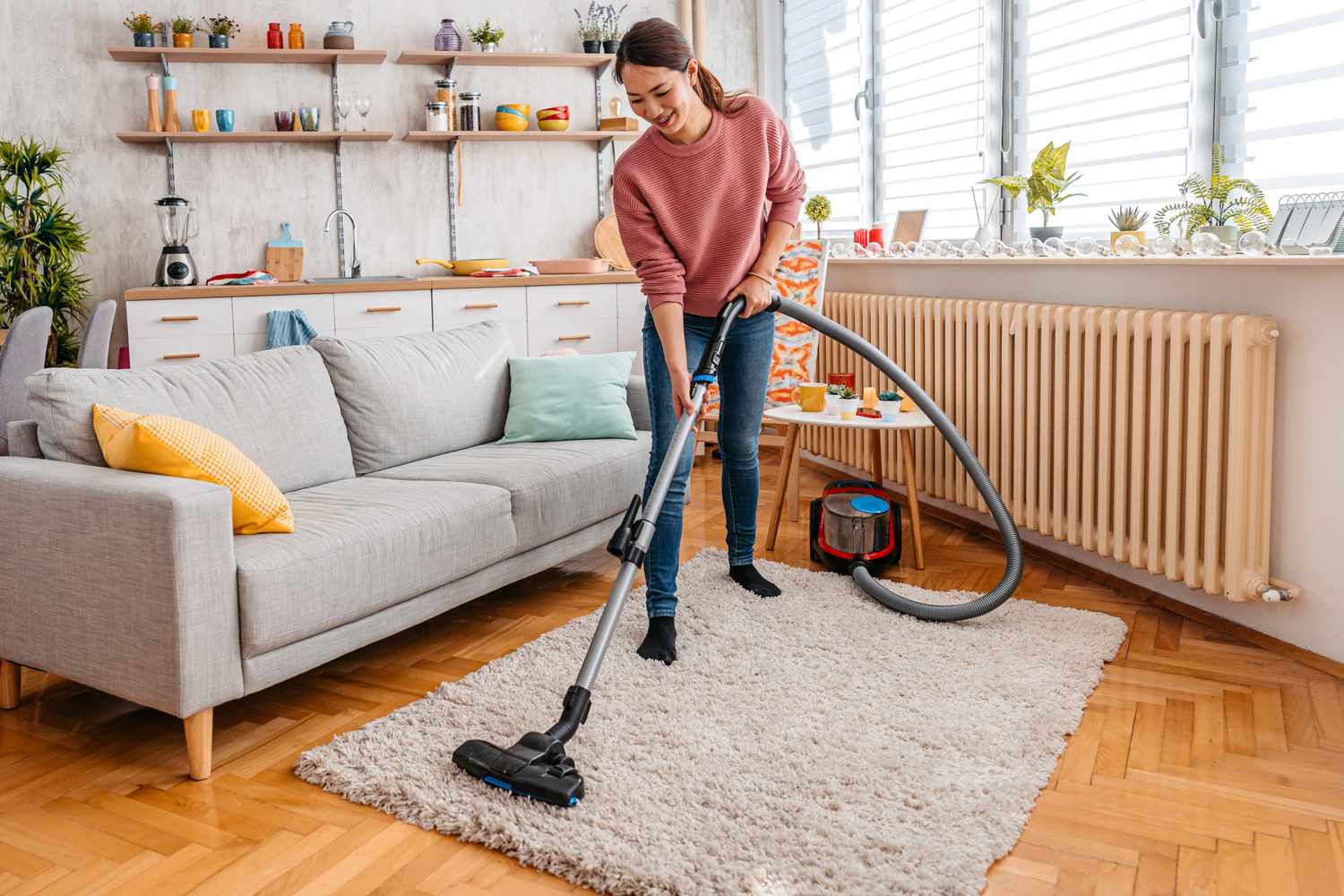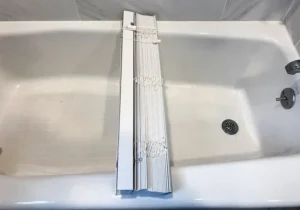Rugs are a key element in home decor, adding comfort, warmth, and style to your living space. However, they also tend to accumulate dirt, dust, and stains over time, requiring regular cleaning to keep them looking fresh and vibrant.
While you could hire a professional or use a vacuum cleaner, sometimes it’s necessary to clean your rug by hand, especially if it’s a delicate material or you’re targeting stubborn stains. Cleaning a rug by hand can be a simple and effective process if done correctly.
This guide will walk you through everything you need to know about hand-cleaning a rug at home—from preparing your supplies to washing and drying your rug for a refreshed look.
Understanding Your Rug: Material Matters
Before starting the cleaning process, it’s essential to understand the material of your rug. Different materials require different cleaning techniques, and using the wrong approach can damage the fibers or affect the rug’s color.
1.1 Common Rug Materials
- Wool: Wool rugs are durable but can shrink if exposed to excessive moisture. They should be cleaned with gentle, non-alkaline detergents.
- Cotton: Cotton rugs are lightweight and easy to clean but may fade if exposed to strong cleaning agents.
- Synthetic Fibers: Rugs made from nylon, polyester, or acrylic are more resistant to stains and easier to clean but may become damaged by high heat.
- Silk: Silk rugs are delicate and should be cleaned with extreme care, using gentle cleaning solutions.
1.2 Checking Care Labels
Most rugs come with care labels that provide guidance on how to clean them. Always check for any specific instructions or warnings regarding cleaning methods, as some rugs may require professional cleaning or special treatments.
Preparing Your Rug for Cleaning
Before diving into the actual cleaning, some prep work is necessary to ensure the best results.
2.1 Shaking Out Dust and Dirt
The first step is to shake out the rug to remove loose dirt, dust, and debris. Take your rug outside, hold it firmly, and give it a few strong shakes. This will help loosen any particles trapped in the fibers.
2.2 Vacuuming the Rug
Once you’ve shaken out the excess dirt, use a vacuum cleaner to remove finer particles. Vacuum both sides of the rug to ensure thorough cleaning. If the rug is small, you can use a handheld vacuum for better control.
2.3 Spot-Treating Stains
Check the rug for any stains or spills that need spot cleaning. Before applying any cleaning solution, test it on a small, inconspicuous area to make sure it won’t cause discoloration. If the test goes well, gently blot the stained area using a cloth dipped in a mild detergent solution. Avoid scrubbing too hard to prevent damaging the fibers.
Choosing the Right Cleaning Solution
Selecting the right cleaning solution for your rug depends on its material and the type of stains you’re dealing with. You can either use commercial rug cleaners or make a simple homemade solution.
3.1 Homemade Rug Cleaning Solutions
- Mild Dish Soap Solution: Mix a few drops of mild dish soap with warm water. This is safe for most rug types and effective for removing general dirt and stains.
- White Vinegar and Water: Mix equal parts white vinegar and water for a natural cleaning solution. This is especially effective for removing odors and refreshing the rug.
- Baking Soda and Water Paste: For stubborn stains, you can make a paste using baking soda and water. Apply it to the stained area, let it sit, and then gently scrub it away.
3.2 Commercial Rug Cleaners
If you prefer a commercial cleaner, make sure to choose one specifically formulated for rugs. Follow the instructions on the label carefully and avoid harsh chemicals that could damage your rug.
Hand-Cleaning the Rug: Step-by-Step Guide
Now that your rug is prepped and you have your cleaning solution ready, it’s time to clean the rug by hand.
4.1 Preparing the Cleaning Area
Find a spacious area where you can lay the rug flat. If possible, clean the rug outside on a patio or driveway to avoid making a mess indoors. Alternatively, you can lay down plastic sheets or towels to protect your floors.
4.2 Washing the Rug
- Step 1: Dampen the Rug: Using a spray bottle or sponge, lightly dampen the surface of the rug with water. You don’t want it to be soaking wet—just damp enough to loosen the dirt.
- Step 2: Apply the Cleaning Solution: Dip a soft-bristled brush or sponge into your cleaning solution and gently scrub the rug in small sections. Use circular motions to lift dirt and stains. Avoid using too much pressure, especially on delicate materials like wool or silk.
- Step 3: Let It Sit: After scrubbing, allow the cleaning solution to sit on the rug for about 10-15 minutes. This helps break down any remaining dirt and allows the solution to work its magic.
- Step 4: Rinse the Rug: Once the cleaning solution has had time to work, rinse the rug with clean water. You can use a hose or a clean, damp sponge to remove any soap or residue.
4.3 Dealing with Stubborn Stains
For more persistent stains, you may need to repeat the cleaning process or use a more concentrated solution. Baking soda paste is great for treating greasy or oily stains, while white vinegar works well for organic stains like coffee or pet accidents.
Drying the Rug Properly
Drying your rug properly is a critical step in the cleaning process. If not dried correctly, rugs can develop mildew or become damaged.
5.1 Blotting Excess Moisture
After rinsing the rug, use clean towels or a cloth to blot out as much moisture as possible. Press the towel firmly onto the rug, but avoid wringing or twisting the fibers as this could cause damage.
5.2 Air-Drying the Rug
The best way to dry a rug is to let it air-dry. Hang the rug over a sturdy clothesline, railing, or fence, making sure it’s evenly supported to avoid stretching. If you’re drying it indoors, place it in a well-ventilated area, preferably near an open window or fan.
5.3 Avoiding Direct Sunlight
While it’s important to dry the rug thoroughly, avoid exposing it to direct sunlight for prolonged periods, as this can cause colors to fade, especially with wool or natural fiber rugs.
Additional Tips for Maintaining Your Rug
Once your rug is clean and dry, there are several things you can do to keep it looking fresh and extend its lifespan.
6.1 Regular Vacuuming
Regular vacuuming helps prevent dirt from embedding deep into the rug fibers. For high-traffic areas, aim to vacuum once or twice a week. For less frequently used rugs, once a month is usually sufficient.
6.2 Spot Cleaning
Address spills and stains as soon as they happen to prevent them from setting into the fibers. Use the same mild cleaning solutions mentioned earlier and gently blot the area—never rub, as this can spread the stain.
6.3 Rug Rotation
Rotating your rug every few months helps distribute wear evenly, especially if the rug is in a high-traffic area. This prevents uneven fading and matting of the fibers.
6.4 Using Rug Pads
If your rug is placed on a hard surface, using a rug pad underneath can prevent it from slipping and reduce wear on the fibers. Rug pads also provide extra cushioning and prolong the life of the rug.
When to Seek Professional Help
While hand-cleaning your rug at home is effective for most situations, there are times when you may need to seek professional help.
7.1 Severe Stains or Damage
If your rug has severe stains, water damage, or requires deep cleaning, it’s best to consult a professional cleaner who specializes in rugs. They have the tools and expertise to handle delicate materials without causing damage.
7.2 Specialty Rugs
Antique, silk, or handwoven rugs may require professional cleaning due to their delicate nature. Attempting to clean these rugs at home could result in irreparable damage.
Conclusion
Cleaning a rug at home by hand may seem like a daunting task, but with the right approach, it can be a simple and rewarding process. By understanding your rug’s material, using gentle cleaning solutions, and following proper washing and drying techniques, you can keep your rug looking clean and vibrant for years to come. Whether it’s tackling stains or giving your rug a seasonal refresh, this guide provides you with all the information you need to maintain your rug’s appearance and longevity.




